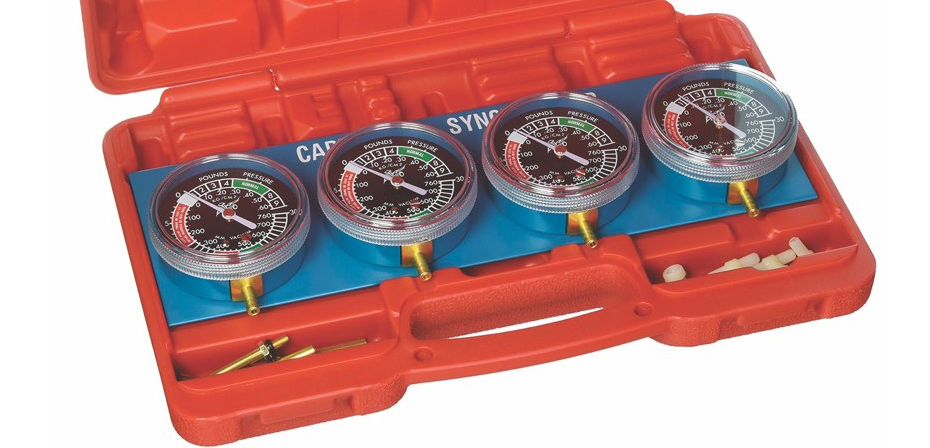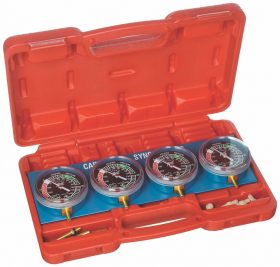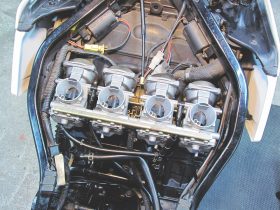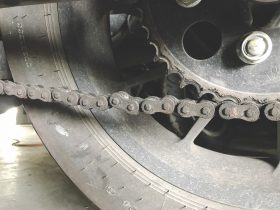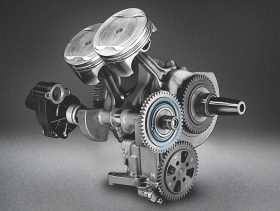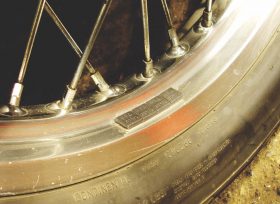Annoying vibration can come from many spots on your motorcycle.
Vibration comes in several forms on a motorcycle, from high-frequency buzzing to low-frequency shaking. Lots of things rotate and reciprocate on a motorcycle – wheels, crankshaft, transmission shafts and gears, clutch, pistons – and any moving part has the potential to create vibration. Manufacturers use several tactics to reduce engine vibration: they install balancers to counter crankshaft-induced vibration; they may attach the engine to the frame with rubber mounts; they may utilize rubber to mount handlebars and foot pegs; and, of course, they balance wheels. Some vibration is normal, but excessive vibration can be annoying, fatiguing, can numb your hands and it can shake parts loose or even break them. If you suspect that your bike vibrates excessively, there are several things to look at and correct to reduce or eliminate vibration.
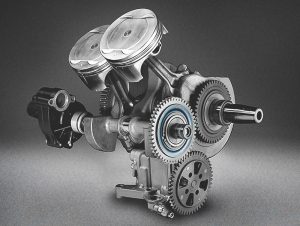 Improperly balanced wheels are a common source of low-frequency vibration. If you feel an up-and-down shaking at the handlebar, the front tire is most likely out of balance. However, it may also be out of round, especially if it is a spoked wheel. A side-to-side shaking of the handlebar, felt mostly at about 80 km/h (the frequency is too high or too low to be felt at other speeds), is an indication that the wheel may not be straight. In either case, the faulty wheel will have to be trued (or replaced if it is a cast wheel) before being balanced. An out-of true wheel is easy to identify by lifting it off the ground and spinning it. Wheel balance, on the other hand, must be checked on a balancer. Properly balanced wheels that run true will positively eliminate low-frequency shaking.
Improperly balanced wheels are a common source of low-frequency vibration. If you feel an up-and-down shaking at the handlebar, the front tire is most likely out of balance. However, it may also be out of round, especially if it is a spoked wheel. A side-to-side shaking of the handlebar, felt mostly at about 80 km/h (the frequency is too high or too low to be felt at other speeds), is an indication that the wheel may not be straight. In either case, the faulty wheel will have to be trued (or replaced if it is a cast wheel) before being balanced. An out-of true wheel is easy to identify by lifting it off the ground and spinning it. Wheel balance, on the other hand, must be checked on a balancer. Properly balanced wheels that run true will positively eliminate low-frequency shaking.
Buzzing vibration originates at the engine, whether it be a single, twin, triple or four. (Six-cylinder engines are inherently quite smooth.) The first thing to look at is if the mounts are all tight. Then check if the engine has a counterbalancer. If it does and it is chain-driven, the chain may be adjustable – something you’d know if you’d read your owner’s manual. Now, as a motorcycle racks up the kilometres, that chain will stretch, which will cause the counterbalancer to go out of sync with the crankshaft and eventually vibrate more than when new. Adjusting the counterbalancer chain achieves two goals: it reduces chain-induced clatter and it keeps the counterbalancer from wavering about in its synchronization with the crankshaft, thus maintaining a steady frequency of vibration.
Another source of vibration on multi-cylinder engines is the cylinders being out of sync or not producing equal power individually. A set of vacuum gauges will tell you right away if the carburetors or EFI throttle bodies are synchronized. A compression or leak-down test will tell you if all the cylinders are firing equally; if they’re not, look no further for that annoying buzz – a rebuild may be in order. While you’re there: are the spark plugs in good shape? One bad plug can cause a misfire in a cylinder, and you know the result of that: vibration.
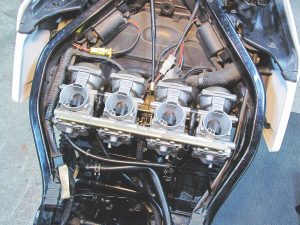 If your bike is equipped with an adjustable primary chain and it is either too loose or too tight, this will cause vibration. Too loose, and the crank will rattle it as power transfers to the clutch; too tight, and uneven wear will produce an oscillating vibration. Either way, adjusting the chain properly will result in a smoother ride.
If your bike is equipped with an adjustable primary chain and it is either too loose or too tight, this will cause vibration. Too loose, and the crank will rattle it as power transfers to the clutch; too tight, and uneven wear will produce an oscillating vibration. Either way, adjusting the chain properly will result in a smoother ride.
Speaking of chains: what’s the condition of the drive chain and sprockets? If you see kinks in the chain or find it difficult to adjust properly because it is stretched unevenly (which is quite common even with moderate mileage), well, this is another source of vibration (and excessive noise too). A chain may be adjusted with a half-inch of free play at its tightest, and a half-spin of the rear wheel will see another inch of play introduced into the chain. That uneven wear produces a remarkable amount of vibration and can be felt especially as the bike slows to a stop. Replacing the chain and sprockets (they should be replaced together) will restore your ride to almost new – if all of the above-mentioned items also check out.
So, you’ve balanced your wheels and they run true; you’ve synchronized the carburetors, changed the plugs and the compression is good; you’ve adjusted or replaced all of the chains you could – and yet there’s still an annoying vibration you can’t put your finger on.
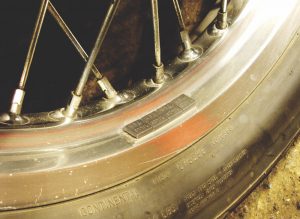 Umm, did you replace the original exhaust with an aftermarket system? Unfortunately, the price you pay for a louder exhaust, aside from annoying your neighbours, is more vibration. In that case, unless you reinstall the OEM exhaust, you’ll have to live with the added vibes.
Umm, did you replace the original exhaust with an aftermarket system? Unfortunately, the price you pay for a louder exhaust, aside from annoying your neighbours, is more vibration. In that case, unless you reinstall the OEM exhaust, you’ll have to live with the added vibes.
Technical articles are written purely as reference only and your motorcycle may require different procedures. You should be mechanically inclined to carry out your own maintenance and we recommend you contact your mechanic prior to performing any type of work on your bike.









